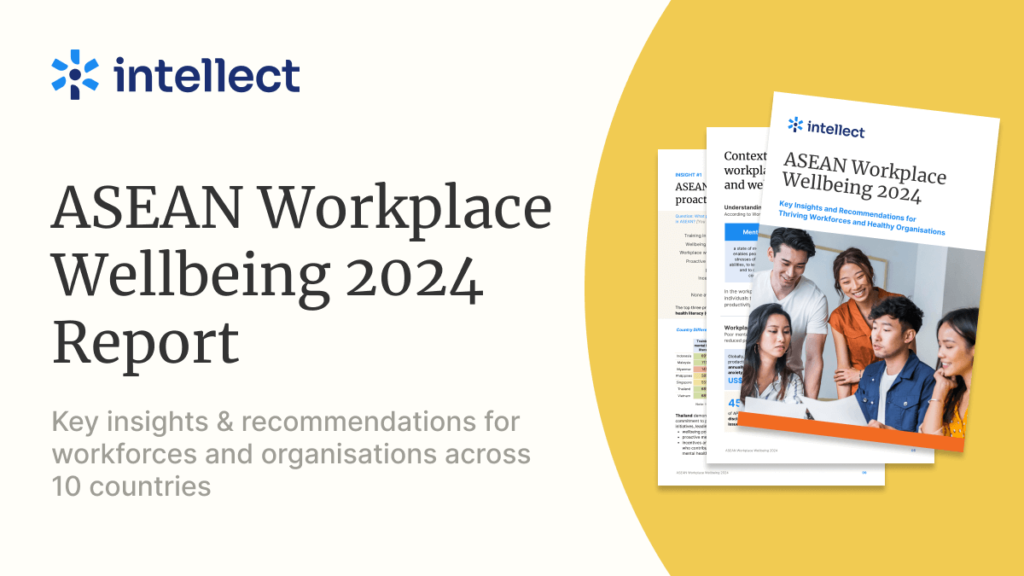Meeting a deadline. Caring for a sick mom. Arguing with your spouse. Fixing a leakage in your house. What do all of these have in common? Does “stress” ring a bell?
Throughout my career as a clinical psychologist and coach, stress has been a hot topic of discussion. While stress is often perceived negatively, it’s dialectical in reality. In other words, it can serve us but also wear us out. That’s the difference between good and bad stress.
Triggered by pressure or demands, stress becomes our natural physiological response to physical, psychological, and emotional stressors. It manifests in five ways:
- Physical (e.g. heart palpitations, sweating, appetite changes)
- Psychological (e.g. overthinking, catastrophising, decreased attention)
- Emotional (e.g.panic, anger, sadness)
- Behaviour (e.g.re-evaluation, changes in routine)
- Interpersonal relations (e.g. conflict, social withdrawal)
The role of stress

Its first function is survival—our most primal instinct. Without a fight-or-flight response, we may not react quickly enough to life-threatening situations. The second function is motivation. A fair amount of stress helps us complete tasks and solve problems which would be harder to focus on without a sharp burst of energy and a sense of urgency. Lastly, stress builds resilience. Everyone knows it strengthens our ability to endure hardship and recover from adversities, but this isn’t always obvious during crunch time.
3 types of stress
There are three types of stress, according to the American Psychological Association.
Acute stress occurs in everyday life and arises from short-lived stressors. When the dust settles, our bodily functioning reverts to its normal state. Acute stress is further divided into two categories—eustress and distress. The former is triggered by positive events, like getting promoted or expecting a baby; while the latter is associated with negative events, like getting into an argument with your coworkers.
Episodic acute stress is a succession of acute stress episodes. Unlike the latter, which tends to be temporary, it compounds. You may experience this when failing to meet back-to-back deadlines, or worrying uncontrollably about negative outcomes.
Chronic stress, which can last for months or even years, is stress that accumulates over time. It can feel never-ending like there’s no light at the end of the tunnel, and helpless because the situation appears to be beyond your control. You might be a caregiver for a sick family member. Or you might be unemployed for a prolonged period. Sometimes, chronic stress can lead to physical illnesses (e.g. stroke) and mental disorders (e.g. depression).
Internal vs external locus of control

Besides recognising the type of stress, it is also important to identify stressors in the workplace. Here are some examples:
- Poor organisation culture
- Unclear organisation practices
- Poor relationships with colleagues
- Role conflicts
- Demanding job scopes
- Poor work-life balance
- Trauma (e.g., bullying)
According to American psychologist Julian Rotter, there are two types of control we have over stressors. For instance, if you have a high internal locus of control, you are more likely to take responsibility for poor work performance. On the other hand, if you applied an external locus of control, you might attribute it to external influences, like the lack of your manager’s support.
Unsurprisingly, an internal locus of control is associated with high achievement. Why is that so? By attributing both success and failure to their own actions, employees are not only able to give themselves credit where it’s due, but also troubleshoot and improve when needed. But the feedback that comes from an external locus of control is just as important. For example, when employees consistently report low job satisfaction, the management can act on the information in a timely manner.
Differentiating good and bad stress

Put simply, good stress (also known as eustress) makes us feel excited about an outcome. Positive feelings, such as excitement and anticipation, allow us to maintain equilibrium by looking forward. Good stress also tends to be temporary, and its short time frame makes stress management simpler. Attending a job interview is one such example. Although the experience entails physical and mental preparation, you stand a chance to bag your dream job and it will be over in a day. The potential pot of gold at the end of the rainbow keeps us energetic and eager toward life.
Bad stress (also known as distress), on the other hand, makes us feel worried and anxious. Say, your boss has requested that you complete a series of projects that will deplete your weekends for several months. At the same time, you’re pursuing your MBA after hours. Because the situation appears both challenging and enduring, it’s bad stress.
This takes a heavy toll on you, makes you feel trapped, and strips you of control over the situation. Furthermore, there are no benefits on the horizon; no outcome to hold out for. When these stressors arise repeatedly, so does chronic stress.
In short,
| Good stress… | Bad Stress… |
| Motivates you to take action | Becomes a de-motivator |
| Increases your excitement | Makes you feel concerned and irritated |
| Often improves your performance | Leads to declined performance |
| Encourages you to focus on your action | Causes you to be distracted |
| Still enables you to function well | Disrupts your functioning (e.g. social, sleep) |
| Makes you feel good overall | Makes you feel unpleasant overall |
Although good stress (eustress) may seem harmless and beneficial, an excess can turn it on its dark side. Here are some telltale signs of it happening:
- The stress is chronic.
- It does not tie in with your goals well (e.g., no long-term benefits).
- It seems to be beyond your control.
- It stops you from doing other things in your life.
In the same way, it’s possible to turn bad stress into good stress with a little work:

1. Focus on your strengths
Leadership, prudence, and curiosity are among the 24 attributes in the Values in Action Inventory of Strengths. With self-knowledge, playing to our strengths when stress kicks in may help us to thrive under pressure. For example, an individual with strong problem-solving skills might start seeing a tight deadline as an exciting challenge. Similarly, an excellent team player might see it as an opportunity to engage everyone.
2. Be open to learning new skills
Seeing stress in a positive light allows us to learn and grow in our careers. For example, conducting a focus group for the first time might be stressful for an introverted employee. If they embark on the task with an open mind, rather than shy away from it, they may gain communication skills that could prove valuable in future meetings.
3. Connect with others
Often, when stress makes us feel stuck, social connection may well be the answer. Confiding in our loved ones or a professional practitioner is not only a cathartic process; it also helps us see the bigger picture and create space around our issues. In team settings, leaning on one another lightens the loads, leverages individual strengths and weaknesses, and strengthens the team’s chemistry.
Managing good and bad stress
Stress happens. But as with most emotions, stress has its function and carries equally important messages. Unfortunately, these can be obscured by the bad reputation it has gained.
By reframing our perspectives, discerning between good and bad stress, and transforming the latter into eustress, we can achieve a good balance in our professional lives. To quote entrepreneur Bill Phillips, “Stress should be a powerful driving force, not an obstacle.”





